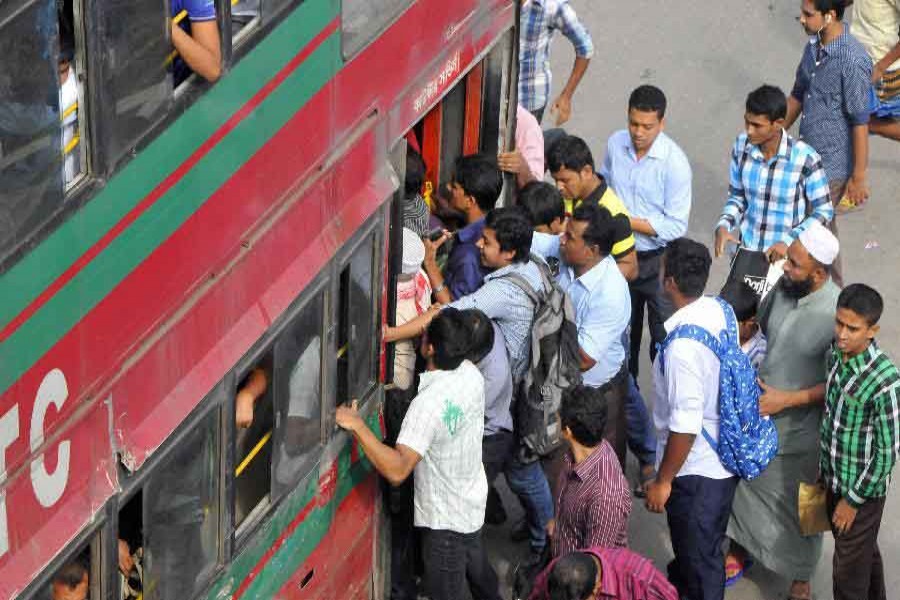Addressing the capital's atrocious public transport system has so far proved to be a highly challenging task for the authorities. Their efforts in the past -- mostly half-hearted and botched up -- failed to bring even the slightest of improvements. The city dwellers are now in no mood to pay attention to plans with promises about disciplining this sector. In this context, the latest move taken up by the authorities to bring thousands of privately-owned buses under the fold of a single company rings like a major initiative to overhaul the crippling system. One may recall that the idea of forming few companies to replace countless small ownership of buses -- largely responsible for the chaotic system -- was the brainchild of the late Mayor of Dhaka North City Corporation (DSCC). Now that the government has gone back to it, it is assumed that the agencies concerned have examined its potential and found a solution in it. However the ways of going about it still remain unclear.
The government's decision to form the company, according to media reports, will start, initially, with a pilot project having more than hundred articulated buses to run on two major routes. The Dhaka Transport Coordination Authority (DTCA) -- the designated body set up in 2012 to oversee the capital city's public transport operation -- expects that the move with its foremost objective of removing congestion will be in a position to transport ten thousand commuters from one place to another in an hour. And this, as it anticipates, will be done at a comparatively higher speed than that being experienced now. A World Bank-funded study project titled Bus Network Study-2016 had also suggested forming a company as a means to freeing Dhaka roads from the unrelenting traffic gridlock. Findings of the study show that average traffic speed in Dhaka over the past ten years has dropped from 21kmph to 7.0kmph --little over average walking speed. Traffic congestion in Dhaka, as the study mentions, is responsible for wasting an astounding 3.2 million workhours a day, amounting to billions of dollars annually.
Certainly, much of the peril associated with the public transport system in Dhaka city is because of the utter unruliness, unhealthy competition and rivalry among hundreds of operators who are also the bus owners. Coupled with these, it is the absence of enforcement of law that causes all the havoc. Had the traffic personnel been up to their task, things would not have gone so drastically down the drains.
Running city buses under the supervision and control of one company having government's stake in it, is likely to remove much of the prevailing disorderliness. But this alone cannot deliver the benefits unless the personnel of the traffic authorities are made fully aware of their functional responsibilities, especially in respect of strict enforcement of traffic rules. Equally important, if not more, is the need for efficiently administering the proposed set-up. In order to put things in place, as planned, the authorities will need to work hard to find out an acceptable mechanism, in consultation with all stakeholders.


